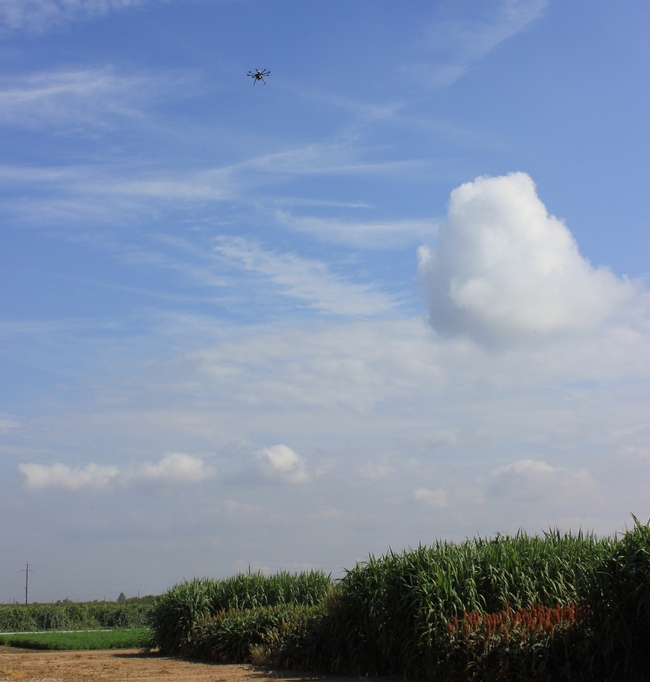Posts Tagged: drones
No Labor Day Holiday for Honey Bees
On Labor Day, a federal holiday, we celebrate the our country's labor movement, our gratitude, and...
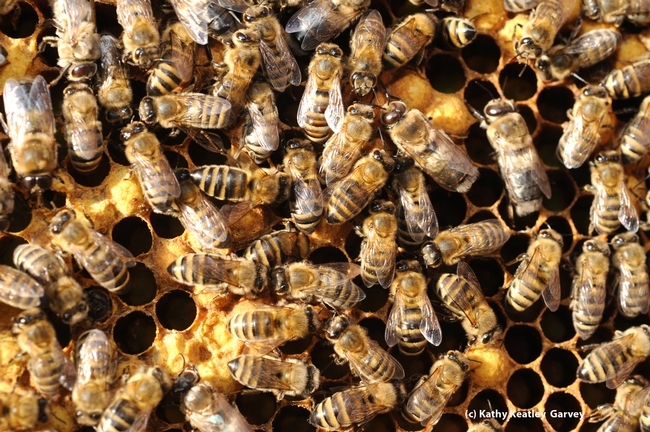
Worker bees are aptly named. They comprise most of the bees in the colony and do most of the work. (Photo by Kathy Keatley Garvey)
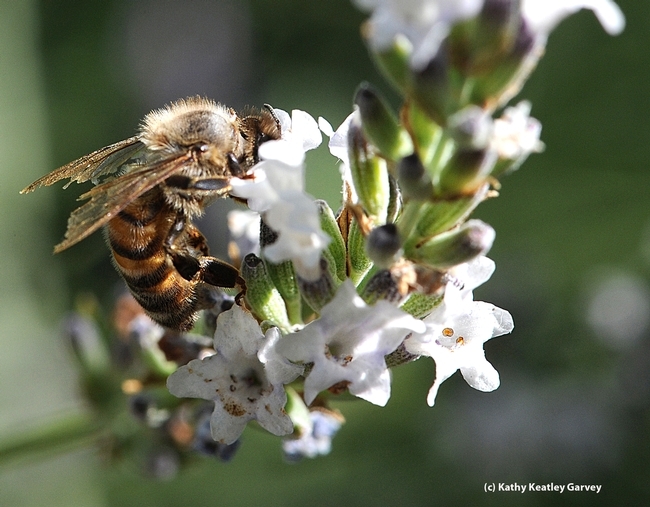
This aging worker bee is all tattered and torn. (Photo by Kathy Keatley Garvey)
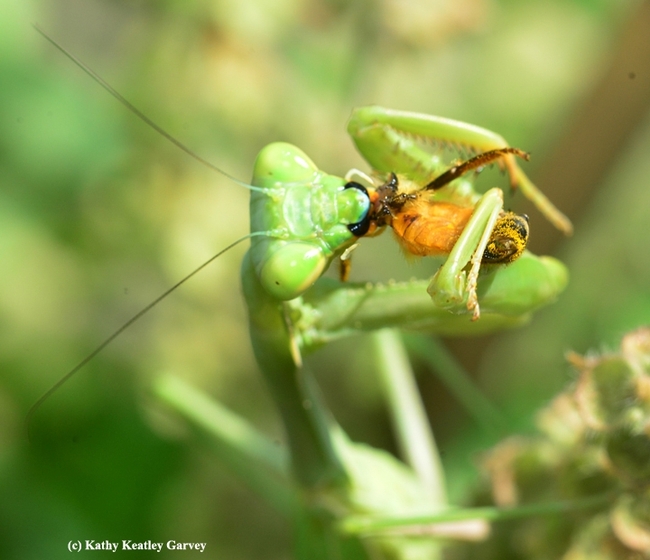
Foraging can be dangerous. Here a praying mantis has just nabbed a worker bee. (Photo by Kathy Keatley Garvey)
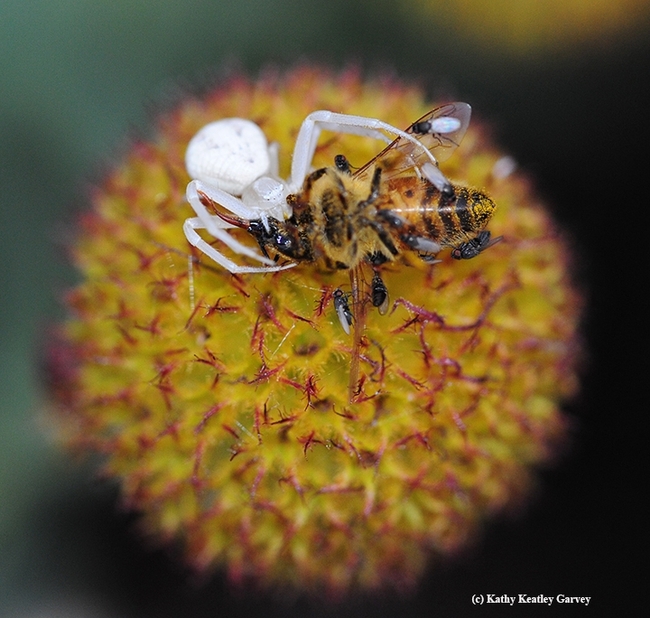
A crab spider feeding on a honey bee. Crab spiders are ambush predators. (Photo by Kathy Keatley Garvey)
Learn About Honey Bees at the California Honey Festival
If you haven't been around honey bees much, and can't distinguish the queen from a worker bee...
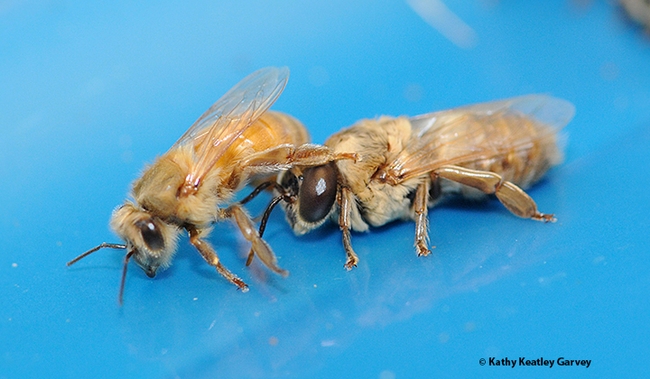
The worker bee (sterile female) is at left, and the drone (male) is at right. (Photo by Kathy Keatley Garvey)
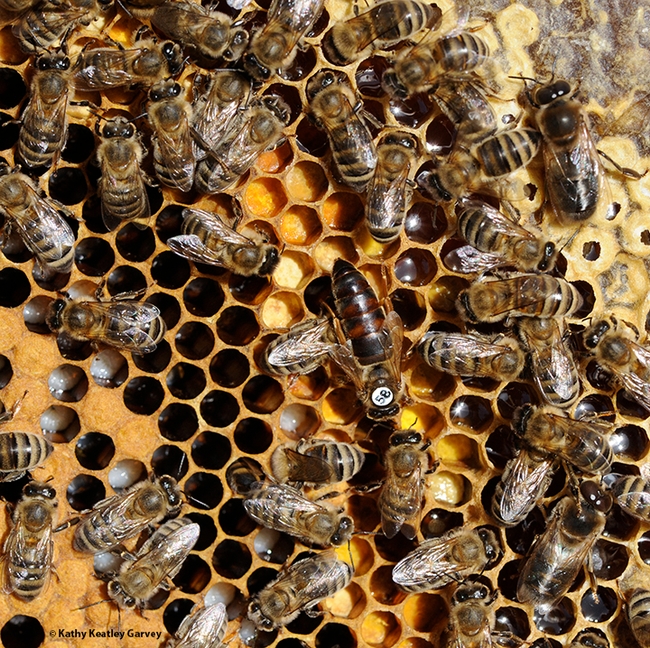
Can you find the queen, the workers and the drones? (Photo by Kathy Keatley Garvey)
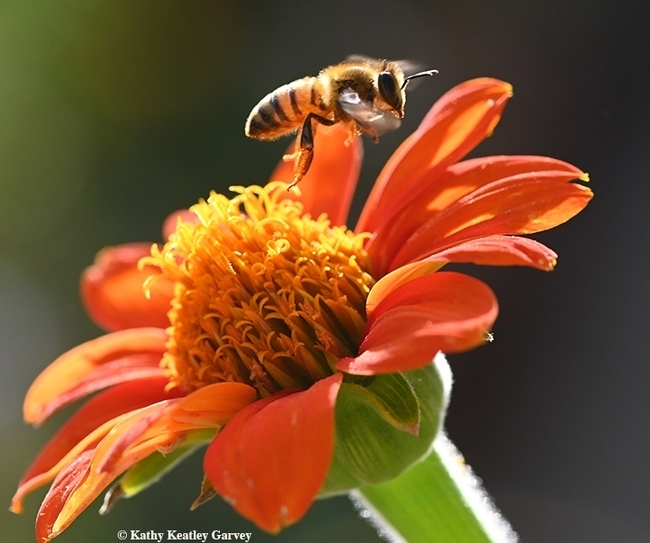
Worker bees are sterile females. Here a worker bee (forager) leaves a Mexican sunflower, Tithonia rotundifola. (Photo by Kathy Keatley Garvey)
Outstanding Research Paper on Agricultural Drones Wins Editors' Choice Award
Winning an Editors' Choice Award was a milestone for an international research team, including UC...
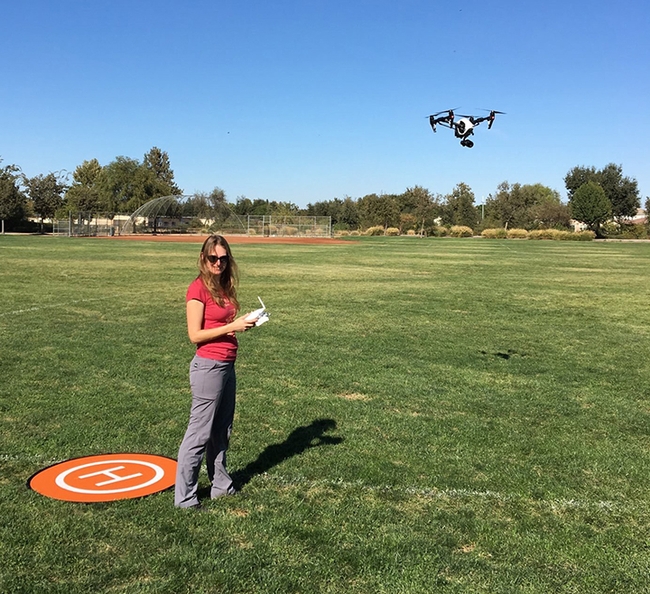
Entomologist Elvira Lange utilizing a drone. Agricultural drones, she said, are "highly versatile and have great commercial potential."
Why Drones Are Important in Sustainable Agriculture in the 21st Century
Drones... If you're thinking of apiculture, you might be thinking of drones (male bees). But if...
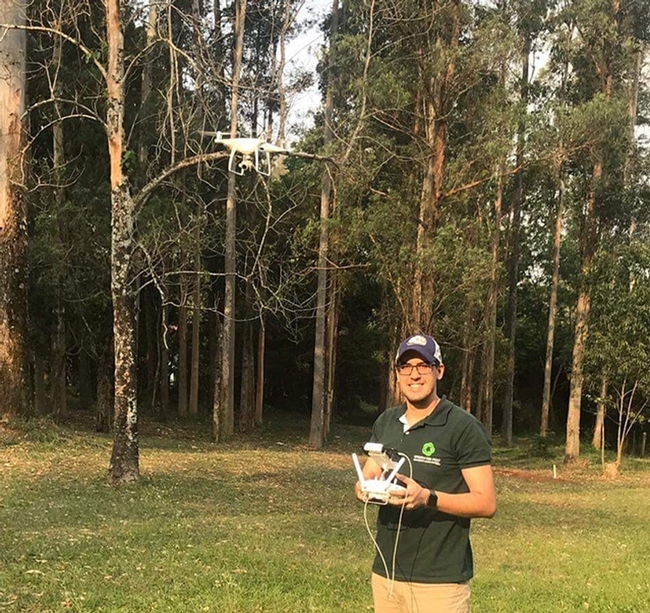
Lead author and entomologist Fernando Iost Filho of the Department of Entomology and Acarology, University of Sao Paulo, Brazil. He is a former UC Davis exchange student.
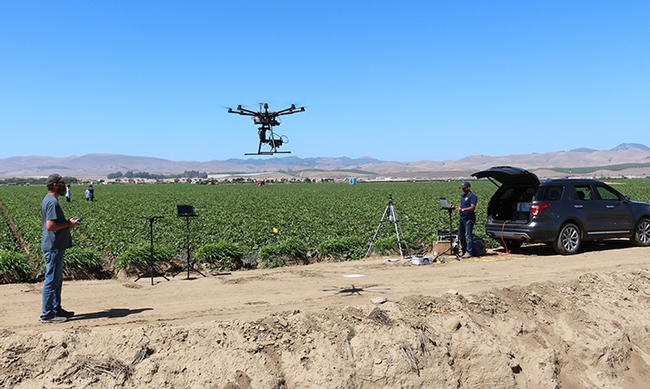
A drone over a Santa Monica strawberry field. Drones can target pest outbreaks or hot spots in field crops and orchards, the scientists pointed out. (Photo by Elvira de Lange)
Drones are used for research and land management; do you want to learn how to use drones?
Jeffery Dahlberg, director of UC ANR Kearney Agricultural Research & Extension Center (KARE), specializing in plant breeding and genetics, is working with drones to collect data for one of his sorghum programs. Work will continue the development of field scale drought nurseries at both KARE and West Side Research & Extension Center (WSREC) under a DOE ARPA-e funded project that utilizes drone technology to phenotype sorghum lines on a weekly basis as they are stressed under pre- and post-flowering drought stress. Research will continue this coming summer to gather additional phenotypic data, along with heat stress measurements and soil moisture monitoring. These nurseries are part of an effort to identify genes that are expressed under different field stress conditions and relate them to sorghum's ability to withstand and recover from stress.
If you are interested in learning how to use drones for research and land management, you may want to explore attending the UCANR Informatics and GIS Program's Dronecamp July 25-27, 2017 at UCANR in Davis, Calif., the application period is March 1 – April 15, 2017. Dronecamp costs $500 for UC affiliates (UC employees and enrolled students), and $900 for non-UC participants. Dronecomp is designed for participants with little or no experience in drone technology, and want to learn how to use drones for mapping applications. The intensive workshop covers drone science; safety and regulations; mission planning; flight operations; data processing; data analysis; visualization; and the latest trends and technology. Read more.
